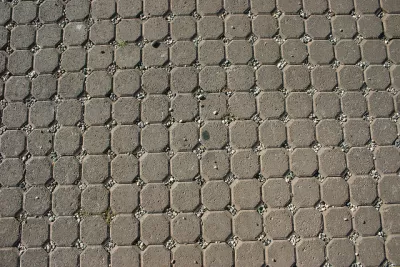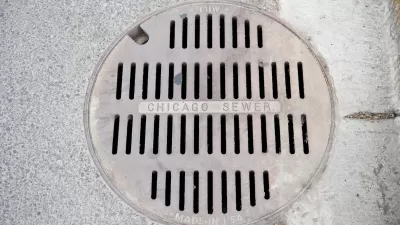These Atlanta neighborhoods stand to gain in the long term from the city's new permeable pavement system and water retention park. But the project has displaced some residents.

Caught at the confluence of combined sewers and stormwater drains, the Atlanta neighborhoods of Peoplestown, Summerhill, and Mechanicsville are undergoing a transformation from impervious to permeable surfaces.
Jen Kinney writes, "The three neighborhoods, largely covered in impervious surface and located in a basin that serves as the natural drainage point for the entire 1,500-mile watershed, have proven highly susceptible to flooding in major rain events."
To fix the problem, the city has embarked on an ambitious project. "With recognition that water would always flow to [one particular point], that system uses a variety of tools, including stormwater ponds and the largest permeable paver project in the U.S. — maybe the world. It's also displacing nearly all of the residents of that highly affected block. The city has acquired all but one of the 29 houses, and is turning the entire block into a water retention park." Stormwater will be separated from untreated waste.
Displaced residents aren't happy though. One of them put it like this: "It's not an amenity if you're being displaced."
"The centerpiece of the project, begun shortly after the flooding and just completed this fall, is nearly 5 miles of streets paved with permeable surface. Spread out between the three neighborhoods, these brick-lined streets allow water to filter down into the earth without passing through the sewer system."
FULL STORY: Stormwater Rethink Aimed at Flooding in Atlanta Neighborhoods

Planetizen Federal Action Tracker
A weekly monitor of how Trump’s orders and actions are impacting planners and planning in America.

Congressman Proposes Bill to Rename DC Metro “Trump Train”
The Make Autorail Great Again Act would withhold federal funding to the system until the Washington Metropolitan Area Transit Authority (WMATA), rebrands as the Washington Metropolitan Authority for Greater Access (WMAGA).

The Simple Legislative Tool Transforming Vacant Downtowns
In California, Michigan and Georgia, an easy win is bringing dollars — and delight — back to city centers.

The States Losing Rural Delivery Rooms at an Alarming Pace
In some states, as few as 9% of rural hospitals still deliver babies. As a result, rising pre-term births, no adequate pre-term care and "harrowing" close calls are a growing reality.

The Small South Asian Republic Going all in on EVs
Thanks to one simple policy change less than five years ago, 65% of new cars in this Himalayan country are now electric.

DC Backpedals on Bike Lane Protection, Swaps Barriers for Paint
Citing aesthetic concerns, the city is removing the concrete barriers and flexposts that once separated Arizona Avenue cyclists from motor vehicles.
Urban Design for Planners 1: Software Tools
This six-course series explores essential urban design concepts using open source software and equips planners with the tools they need to participate fully in the urban design process.
Planning for Universal Design
Learn the tools for implementing Universal Design in planning regulations.
Smith Gee Studio
City of Charlotte
City of Camden Redevelopment Agency
City of Astoria
Transportation Research & Education Center (TREC) at Portland State University
US High Speed Rail Association
City of Camden Redevelopment Agency
Municipality of Princeton (NJ)





























